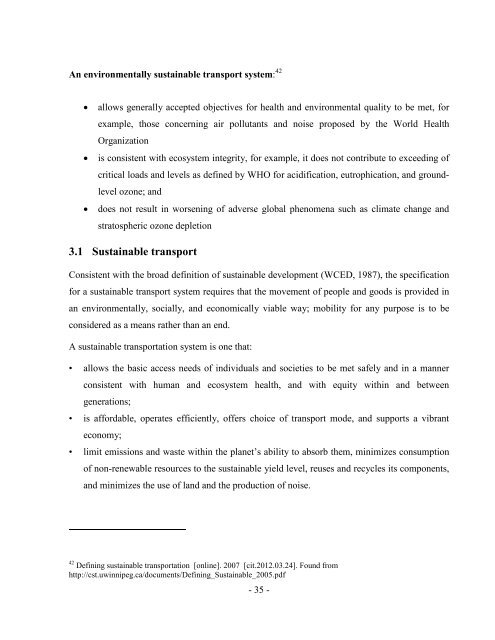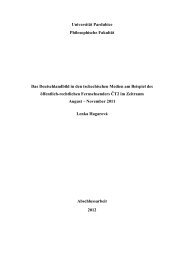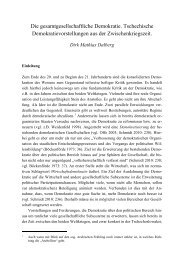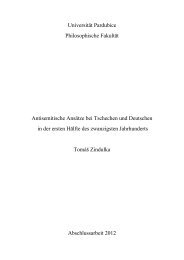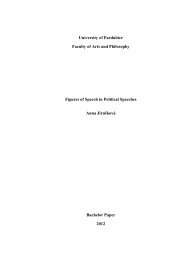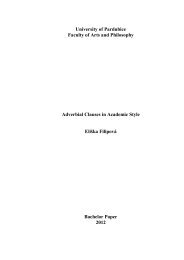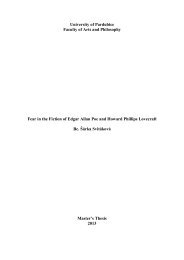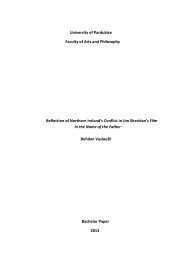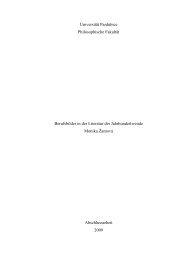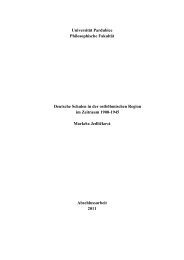University of Pardubice Jan Perner Transport Faculty Transport and ...
University of Pardubice Jan Perner Transport Faculty Transport and ...
University of Pardubice Jan Perner Transport Faculty Transport and ...
You also want an ePaper? Increase the reach of your titles
YUMPU automatically turns print PDFs into web optimized ePapers that Google loves.
An environmentally sustainable transport system: 42<br />
• allows generally accepted objectives for health <strong>and</strong> environmental quality to be met, for<br />
example, those concerning air pollutants <strong>and</strong> noise proposed by the World Health<br />
Organization<br />
• is consistent with ecosystem integrity, for example, it does not contribute to exceeding <strong>of</strong><br />
critical loads <strong>and</strong> levels as defined by WHO for acidification, eutrophication, <strong>and</strong> ground-<br />
level ozone; <strong>and</strong><br />
• does not result in worsening <strong>of</strong> adverse global phenomena such as climate change <strong>and</strong><br />
stratospheric ozone depletion<br />
3.1 Sustainable transport<br />
Consistent with the broad definition <strong>of</strong> sustainable development (WCED, 1987), the specification<br />
for a sustainable transport system requires that the movement <strong>of</strong> people <strong>and</strong> goods is provided in<br />
an environmentally, socially, <strong>and</strong> economically viable way; mobility for any purpose is to be<br />
considered as a means rather than an end.<br />
A sustainable transportation system is one that:<br />
• allows the basic access needs <strong>of</strong> individuals <strong>and</strong> societies to be met safely <strong>and</strong> in a manner<br />
consistent with human <strong>and</strong> ecosystem health, <strong>and</strong> with equity within <strong>and</strong> between<br />
generations;<br />
• is affordable, operates efficiently, <strong>of</strong>fers choice <strong>of</strong> transport mode, <strong>and</strong> supports a vibrant<br />
economy;<br />
• limit emissions <strong>and</strong> waste within the planet’s ability to absorb them, minimizes consumption<br />
<strong>of</strong> non-renewable resources to the sustainable yield level, reuses <strong>and</strong> recycles its components,<br />
<strong>and</strong> minimizes the use <strong>of</strong> l<strong>and</strong> <strong>and</strong> the production <strong>of</strong> noise.<br />
42 Defining sustainable transportation [online]. 2007 [cit.2012.03.24]. Found from<br />
http://cst.uwinnipeg.ca/documents/Defining_Sustainable_2005.pdf<br />
- 35 -


